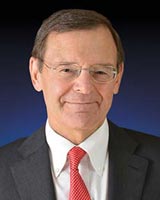Editorial
Widening the Lens of Psychotherapy: is it time to consider the Power of Alternative Healing Approaches?
Keith Klostermann1* and Theresa Mignone2
1Medaille College, USA
2Enlightened Therapies of Western New York, USA
*Corresponding author: Keith Klostermann, Medaille College, 18 Agassiz Circle, Buffalo, NY 14214, USA, Email:
kck35@Medaille.edu
Submitted: 10 February 2019; Accepted: 17 April 2019; Published: 19 April 2019
Cite this article: Klostermann K, Mignone T (2019) Widening the Lens of Psychotherapy:
is it time to consider the Power of Alternative Healing Approaches? JSM Addict Med Ther 3: 5.
In most studies of psychotherapy outcomes conducted
over the past 40 years, the average treated person is better
off than 80% of untreated samples. Moreover, the outcome of
behavioral health services equals, and in most cases, exceeds
those treatments provided for specifically medical conditions
(e.g., coronary heart disease). Yet, the field is not improving and
studies of overall efficacy conducted over the past 40 years do
not demonstrate any appreciable difference – which begs the
question, Why?
Perhaps it is the near myopic focus of the field on specific
models and techniques, driven in part, by the need to develop
and emphasis on evidence-based treatments. Studies reveal
that the average therapist plateaus in early in her or his career.
Simply stated, therapists do not seem to get better with time
and experience in the field – two criteria often consider when
choosing a clinical supervisor or when hiring for leadership
positions.
In addition, In fact, the failure to address dropouts in
psychotherapy is one of the biggest challenges facing our field.
Research to date suggests that premature termination or dropout
averages about 47% [1], for children and adolescents, the range
varies from 28% to 85% [2-4]. Furthermore, results of outcome
research also reveals the following alarming statistics: 1) a
significant percentage (30% to 50%) of clients do not benefit from
therapy, 2) deterioration rates among adult clients range between
5% and 10%, and 3) it is estimated that the clients who do not
benefit or deteriorate while in psychotherapy are responsible for
60-70% of the total expenditures in the health care system.Given
these alarming statistics, perhaps it is time for researchers and
clinicians alike to shift their conceptualizations from the more specific view of curing/improving to a more universal construct
such has healing and to better understand the allure and curative
mechanisms of these alternative approaches.
Interestingly in some countries (e.g., India, China),
governments are beginning to provide support for religious
healing practices. Results are beginning to emerge with
preliminary data suggesting similar outcomes to mental health
providers. Given the results of a recent Consumer Reports study
revealed that participants reported being more likely to see a
healer than a therapist. This finding begs the question, What is
psychotherapy missing that spiritual/healing practices seem to
provide? We contend that it may not be what is missing, back a
lack of emphasis on factors such as the ritual of therapy, belief
that ritual will help or can work (i.e., hope), the individual feeling
care about, and the relationship. These concepts are very abstract
and their application in treatment can difficult to ascertain from
therapist perception alone as the therapists tend to be poor
predictors of process and outcome – it is the client’s perceptions
which matter most. Perhaps it is time to expand our thinking
about how people change as well as the change process itself and
how we as therapists can honor client perceptions across many
different domains (e.g., emotional, spiritual, social) and access
areas for healing.






























